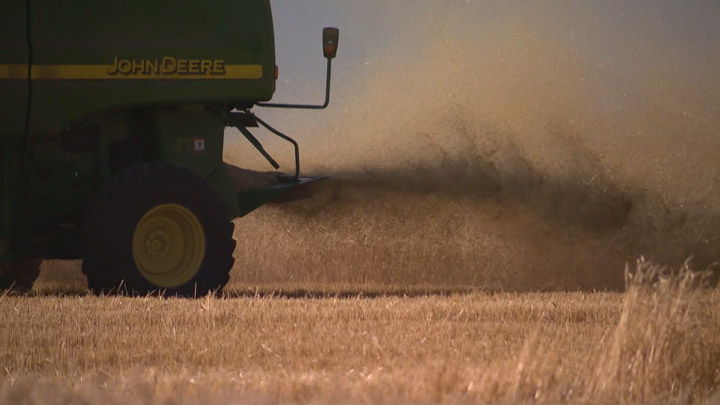Saskatchewan has been no stranger to heat this summer and, for farmers across the province, the warm weather couldn’t have come at a better time.

According to this week’s crop report, hot and dry weather has allowed for “tremendous harvest progress,” particularly in the southwest and west-central regions of the province.
While some areas in the east received heavy rainfall and slowed down producers, as a whole, harvest in the province sits at 16 per cent, up five per cent from last week.
The harvest is currently right on par with the five-year average, while an additional 12 per cent of crops are now swathed or ready to straight-cut.
“Harvest progress is most advanced in the southwest region, where farmers have 45 per cent of their crop now in the bin, followed by producers in the west-central who have 19 per cent of their crop harvested,” a press release read.
Farmers in the southeast have six per cent of crops off their fields, the east-central has completed four per cent and both the northern regions have one per cent of their crop harvested.
For many producers in the wetter areas of the province including the eastern and northern regions, harvest will not begin for another week or more as their crops have not matured yet.
- ‘Shock and disbelief’ after Manitoba school trustee’s Indigenous comments
- Invasive strep: ‘Don’t wait’ to seek care, N.S. woman warns on long road to recovery
- Grocery code: How Ottawa has tried to get Loblaw, Walmart on board
- ‘Super lice’ are becoming more resistant to chemical shampoos. What to use instead
Sixty-three per cent of the winter wheat, 36 per cent of the fall rye, 52 per cent of the lentils, 43 per cent of the field peas, 30 per cent of the durum, six per cent of the spring wheat and three per cent of the canola has been combined.
And while harvest is a good sign for many farmers, grasshoppers continue to cause problems for many producers, and some are already worried about what their population will be next year and how they will manage to control them.
Other crop damage was from wind, heavy rainfall, hail and a handful of reports of sawfly damage in some wheat fields this past week, but producers are saying that damage is low for the time being.
Provincially, pasture conditions are rated as six per cent excellent, 37 per cent good, 28 per cent fair, 16 per cent poor and 13 per cent very poor. Pastures have greatly improved this year due to more frequent rains; the largest improvement has been seen in the eastern half of the province along with the northwest region.
In the southwest and west-central regions, pastures have not fared as well due to suffering through extremely dry growing conditions once again.





Comments